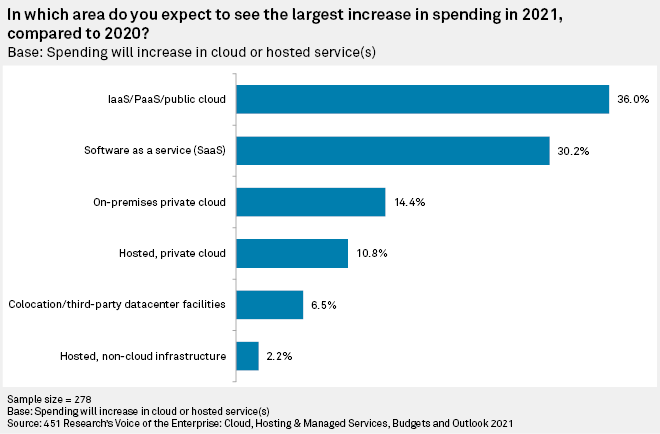Low-code workflow automation: Improving operations for IT and line of business
Why are leading companies turning to low-code workflow automation to improve their ROI on SaaS tools and speed up their most important operational processes? According to Gartner, more firms are moving towards the composable enterprise model of IT operations to deliver “business outcomes and [adapt] to the pace of business change.” Gartner’s model posits that the most successful companies are revamping their technical tools to be more modular and tweakable so software users can make adjustments on the fly and adjust rapidly to changes in the market. Low-code workflow automation platforms are a key factor in implementing the composable enterprise to speed up projects and empower both IT and non-IT teams to focus on more-strategic processes while improving execution on mission-critical operations.

Per the composable enterprise, companies improve their business capabilities with a modular, tweakable stack. Image courtesy Gartner.
In recent years, companies have significantly increased their usage of low-code platforms, since such technology gives users of varying levels of technical expertise the power to improve their technical process, both within and outside of IT. Estimates suggest that the low-code market will grow to more than $190 billion by 2030 as investment in low-code platforms has more than doubled from 10% to 26% as a result of the pandemic.
The impressive numbers seem a bit less surprising when we connect them to the challenges of modern organizations. The average department uses 40–60+ different applications (and hundreds, if not thousands, company-wide), which means that organizations everywhere must make the most of their many technical tools. Line-of-business (LOB) teams frequently need to manage data across different tools and systems, all of which lack robust, custom API integrations–software level connections that let users flow data between their tools.
Most organizations traditionally rely on their IT teams to build out integrations, but IT continues to be stretched thin with a massive backlog that extends as far back as 12 months while also tackling strategic initiatives such as digital transformation and infosec. As IT teams struggle to meet the demands of customers, business teams, and C-Suite execs, organizations are turning to low-code platforms to enable their teams to self-service their integration and process improvement needs while unburdening IT.
How integration challenges block business goals
Cloud-based SaaS applications have continued to proliferate in the wake of the so-called “SaaS explosion,” and research suggests that during the pandemic, businesses have increased spending on cloud and SaaS services by more than 30%. Unfortunately, while SaaS applications frequently excel at their intended functions, they usually lack native integrations with each other.

Businesses increased cloud and SaaS spending by more than 30% during the pandemic. Image courtesy S&P Global.
As a result, LOB teams must either devote hours of manual work to managing data across their apps, or request integration support from their IT organizations. For IT teams tasked with building custom integrations between different applications, integration projects can quickly turn into an endless burden of internal builds across internally used tools which eventually break when vendors update APIs, requiring constant maintenance.
As LOB users acquire and adopt more SaaS tools, they find themselves in increasing need of integrations across their ever-growing tech estate. Compounding the issue is the much-talked-about developer shortage which has organizations scrambling for IT team members to address the growing integration backlog.
3x more executives name low code as a top investment
Since 2020, reports state that 3x more executives cite low code as their most important investment, because “low-code platforms can dramatically speed the creation of sophisticated enterprise-class applications that incorporate complex business logic, automate workflow and case management activities, integrate with existing information systems, and enable a slick user experience.”

3x more executives see low-code platforms as their top automation investment since 2020. Image courtesy KPMG.
As companies continue to grapple with the ongoing challenges of digital transformation, an ever-increasing tech stack, and a distributed workforce, they are turning to low-code automation to expedite their processes, enable LOB to self-service, and unblock IT. The best low-code automation platforms give teams across the organization the power to stand up their own bespoke workflows to seamlessly manage data and flawlessly execute mission-critical processes at scale.
Leaning into low-code business process automation
For both IT and line-of-business teams, low-code workflow automation platforms can pave a powerful path to growth at scale while giving teams the power to skip hours of tedious and error-prone manual tasks. Low-code automation lets business users across the organization take full control of their data across multiple apps, getting rid of silos and setting up custom flows that send their most important data wherever they need. When professionals can automate important processes at scale, they can then turn their attention to higher-level strategy and innovation.
The average enterprise uses upwards of 1,000+ cloud software applications for daily operations and processes. A low-code workflow automation platform highlights the endless potential for speeding and improving projects via integration and automation.

The average enterprise uses as many as 1,000+ cloud applications. Image courtesy Netskope.
Let’s look at a few common use cases.
Lead routing
Lead routing is essentially getting the right leads to the right people in sales within your organization. CRMs such as Salesforce often have built-in features that assign leads based on a set of lead assignment rules. However, out-of-the-box CRMs are limited in scope and often require manual intervention when a lead ends up in the wrong place.
With a low-code workflow automation platform, sales and marketing teams can seamlessly integrate their CRM with the rest of their revenue stack to ensure they always get the hottest leads to the right salespeople instantly. Lead routing automation with a sophisticated low-code platform that supports custom logic operators allows for more-complex assignment logic, so the right leads always end up with the right sales rep.
Learn how employee communication leader Jellyvision uses workflow automation to speed up lead routing 3x.
Order fulfillment
In e-commerce, order fulfillment refers to the entire process between when a customer orders a product and when it arrives at the specified location. There are several different processes within order fulfillment, including order details, inventory management, and customer notifications, which means several different software applications to integrate.
Using a low-code workflow automation platform, e-commerce firms can easily scale their entire order fulfillment process. With a new, incoming order as the trigger, e-commerce companies can automate the process of passing order details to their ERP, coordinating with delivery drivers, updating customers, and finally, closing the order.
IT ticketing
Ticketing automation is a great way to immediately create and prioritize helpdesk tickets, as well as assign and notify the right IT team members. Streamlining your ticketing process can help reduce ticket backlog, better manage IT resources, and improve customer satisfaction.
For example, when a customer submits a Helpdesk ticket, you can use a modern low-code platform to set custom business logic rules to prioritize and assign the ticket. Low-code automation platforms can even send automatic notifications to the right IT team member through your internal messaging system.
Incident management
Incident management refers to how IT and DevOps teams respond to and restore any type of unplanned service interruption or event. For all organizations, speed and success are of utmost importance for incident management.
By integrating your cloud monitoring platform with your ticketing and alerting system, you can automate the entire incident management process. A low-code workflow automation platform can notify the right people of service interruptions in real time, improving efficiency and minimizing downtime.
Employee onboarding
The rise of remote work and the recent Great Resignation has only accelerated the need for a comprehensive and efficient employee onboarding process. An influx of new employees requires user provisioning and tool authentication, scheduled training sessions, and many more processes that leave little room for error.
A low-code workflow automation platform can empower HR professionals to integrate applicant tracking systems (ATS) and HR management systems (HRMS), sync employee data across systems, automate user provisioning, and seamlessly offboard departing employees. With an end-to-end automated onboarding process, businesses can efficiently scale their HR operations and provide an engaging employee experience.
Low-code process automation is a key megatrend for business
Low-code workflow automation bridges the gap between IT teams and business users by giving citizen developers the power to set up integrations and create powerful automated workflows without tapping development resources. As a result, IT teams can focus on more-strategic projects. Once businesses begin to foster citizen developers, every department will want to integrate their stack and begin automating key workflows.
As businesses across all industries invest more time and resources into low-code platforms to bolster their operations, reduce IT overhead, and empower citizen developers, workflow automation is a leading initiative to drive adoption.




